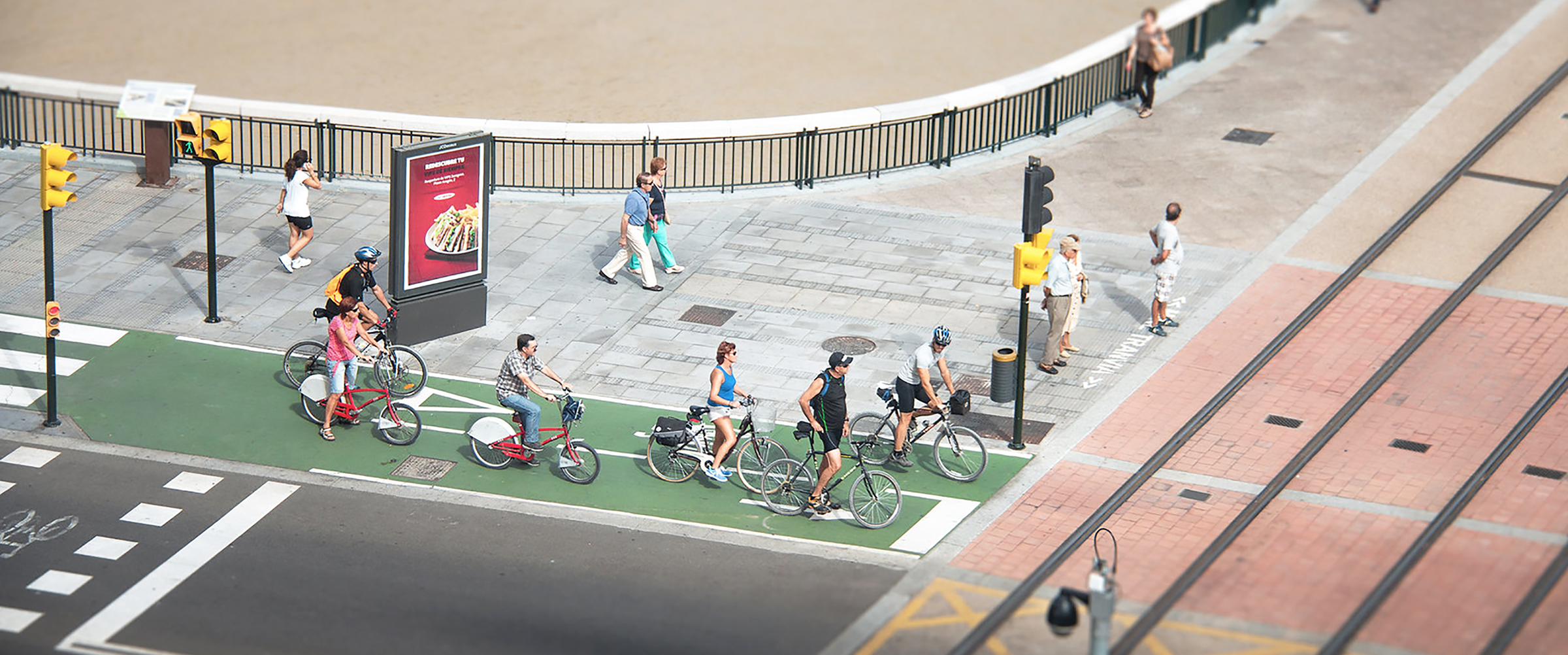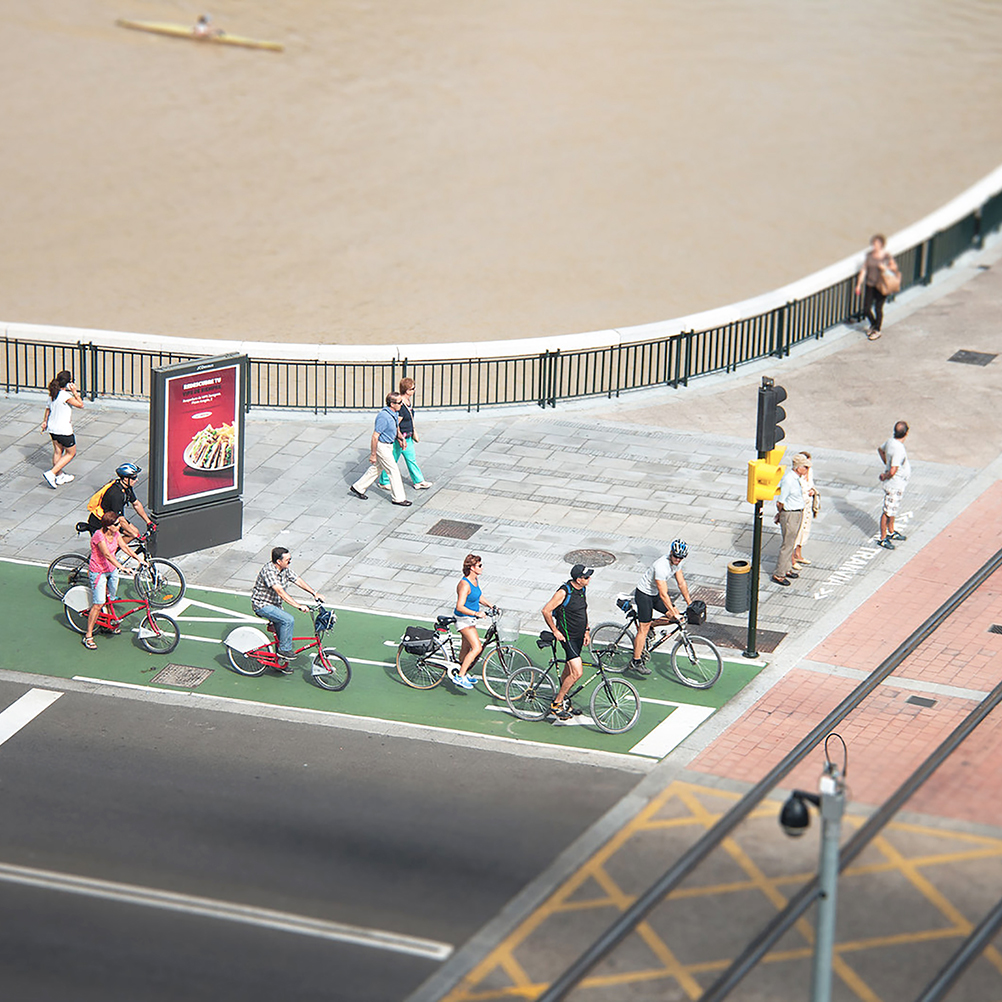Safety
Safety for cyclists is a critical enabling factor, and cities with the highest cycling mode shares also have physical and legal protections in place for cyclists. Safe cycling cities dedicate street space for cycling infrastructure, and take steps to reduce road speeds by narrowing vehicle lanes.
+ Read MoreProtected bicycle lanes, cycle tracks, greenways, and protected intersections have become more common in cities over the past few decades, however complete and connected networks of cycling infrastructure are still rare. Coordinated planning and resources dedicated to connecting existing lanes and building out direct routes are crucial for improving safe cycling conditions. Well-designed infrastructure includes physical protection for cyclists, does not force mixing between cars and cyclists, particularly at intersections, and decreases overall risk of crashes. Safe bicycle lanes also include lighting, and a smooth, paved surface that is maintained over time.
Additionally, legal protections for cyclists can reinforce safety, such as laws that enable cyclists to collect damages from drivers in a crash where both parties are at fault, or those that ban close passing by vehicles. Funding and officers for enforcement of cycle lanes must also be designated, both to prevent cars from parking in or otherwise blocking bicycle lanes and to prevent drivers from engaging in other dangerous behavior like speeding or passing cyclists at close range.


